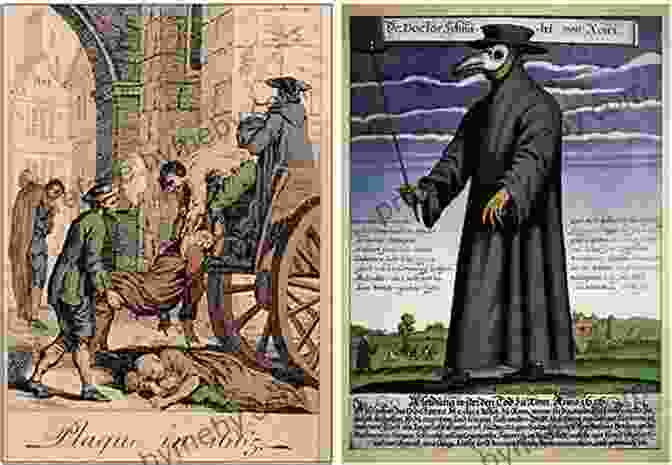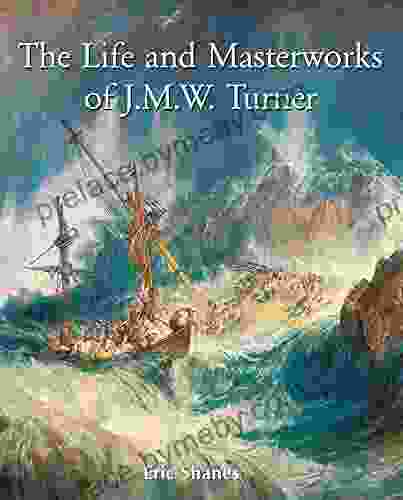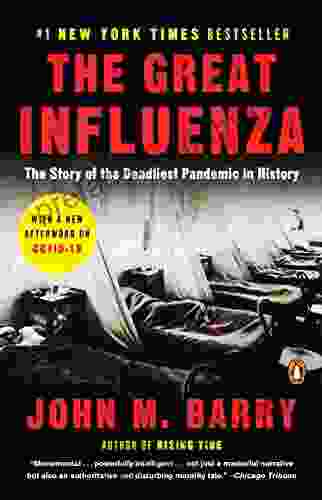Unveiling the Catastrophic Legacy: The Story of the Deadliest Pandemic in History


In the annals of human history, epidemics and pandemics have played a devastating role, shaping the course of civilizations and leaving an indelible mark on our collective memory. Among these catastrophic events, one stands out as the deadliest and most infamous: the Plague of Justinian.
4.6 out of 5
| Language | : | English |
| File size | : | 3498 KB |
| Text-to-Speech | : | Enabled |
| Screen Reader | : | Supported |
| Enhanced typesetting | : | Enabled |
| X-Ray | : | Enabled |
| Word Wise | : | Enabled |
| Print length | : | 568 pages |
Emerging in the Eastern Roman Empire (Byzantine Empire) in the 6th century AD, the Justinian Plague swept through Europe, Asia, and Africa, killing an estimated 25-50 million people, or one-third to one-half of the world's population at the time. This cataclysmic event plunged the world into darkness, leaving behind a trail of devastation and despair.
Origins and Spread
The exact origins of the Justinian Plague remain shrouded in mystery, but it is believed to have originated in Central Asia. From there, it spread westward along trade routes, carried by fleas that infested black rats on merchant ships.
The first known outbreak occurred in the Egyptian port city of Pelusium in 541 AD. Within a matter of months, the plague had reached Constantinople, the capital of the Byzantine Empire, where it ravaged the densely populated city, killing thousands of people each day.
From Constantinople, the plague spread like wildfire throughout the Byzantine Empire and beyond. It reached as far west as Britain and as far east as China, leaving a trail of devastation in its wake.
Symptoms and Mortality
The Justinian Plague was caused by the bacterium Yersinia pestis, which is also responsible for the bubonic plague. The disease manifested itself in two main forms: bubonic and pneumonic.
Bubonic plague is the most common form, characterized by the swelling of lymph nodes in the armpits, groin, or neck (buboes). Other symptoms include fever, chills, nausea, and vomiting.
Pneumonic plague is a more severe form of the disease that affects the lungs. It is transmitted through the inhalation of infected droplets and can lead to rapid death.
The mortality rate of the Justinian Plague was extremely high, with estimates ranging from 30% to 90%. In some areas, entire villages and towns were wiped out, leaving behind only abandoned homes and the skeletal remains of the dead.
Social and Economic Impact
The Justinian Plague had a profound social and economic impact on the world. The loss of so many lives led to a severe labor shortage, which in turn disrupted trade, agriculture, and other industries.
The plague also fueled widespread fear and superstition. Many people believed that the plague was a divine punishment or the work of evil spirits. This led to the persecution of scapegoats, such as Jews and foreigners, who were often blamed for spreading the disease.
In the Byzantine Empire, the plague contributed to the decline of the empire's power and prestige. The loss of so many citizens and the disruption of trade weakened the empire's economy and military, making it more vulnerable to attack from external enemies.
Medical Knowledge and Treatments
In the 6th century, medical knowledge about the Justinian Plague was limited. Doctors had no effective treatments for the disease, and most patients died within a matter of days or weeks after contracting it.
Some physicians believed that the plague was caused by an imbalance of bodily fluids (humors). They prescribed bloodletting, purging, and other treatments that often did more harm than good.
Other doctors looked for supernatural causes, such as divine punishment or evil spirits. They often prescribed prayers, amulets, and other religious rituals to ward off the disease.
Legacy and Lessons Learned
The Justinian Plague had a lasting impact on the world. It left a psychological scar on the human psyche, reminding people of the fragility of life and the devastating power of disease.
The plague also played a role in the development of public health measures. In the wake of the pandemic, cities began to implement sanitation measures, such as garbage collection and water purification, to prevent the spread of disease.
The Justinian Plague serves as a sobering reminder of the importance of pandemic preparedness. It shows that even the most advanced civilizations are vulnerable to infectious diseases and that it is essential to have plans in place to respond to such threats.
The Plague of Justinian was a cataclysmic event that left an indelible mark on human history. Its devastating impact on the world's population, economy, and society is a reminder of the fragility of life and the power of disease.
By studying the Justinian Plague, we can learn valuable lessons about pandemic preparedness and the importance of public health measures. We can also gain a better understanding of the human experience during times of crisis and the resilience of the human spirit in the face of adversity.
Free Download your copy of The Story of the Deadliest Pandemic in History today!
4.6 out of 5
| Language | : | English |
| File size | : | 3498 KB |
| Text-to-Speech | : | Enabled |
| Screen Reader | : | Supported |
| Enhanced typesetting | : | Enabled |
| X-Ray | : | Enabled |
| Word Wise | : | Enabled |
| Print length | : | 568 pages |
Do you want to contribute by writing guest posts on this blog?
Please contact us and send us a resume of previous articles that you have written.
 Book
Book Novel
Novel Page
Page Chapter
Chapter Text
Text Story
Story Genre
Genre Reader
Reader Library
Library Paperback
Paperback E-book
E-book Magazine
Magazine Newspaper
Newspaper Paragraph
Paragraph Sentence
Sentence Bookmark
Bookmark Shelf
Shelf Glossary
Glossary Bibliography
Bibliography Foreword
Foreword Preface
Preface Synopsis
Synopsis Annotation
Annotation Footnote
Footnote Manuscript
Manuscript Scroll
Scroll Codex
Codex Tome
Tome Bestseller
Bestseller Classics
Classics Library card
Library card Narrative
Narrative Biography
Biography Autobiography
Autobiography Memoir
Memoir Reference
Reference Encyclopedia
Encyclopedia Eileen Murray
Eileen Murray Emery Harris
Emery Harris Nikita Thorn
Nikita Thorn Uta Frith
Uta Frith Paul Hellman
Paul Hellman Rick Revelle
Rick Revelle Eleanor Richardson
Eleanor Richardson Emily Ecton
Emily Ecton Lisa Eldridge
Lisa Eldridge Emily Tamkin
Emily Tamkin Fennel Hudson
Fennel Hudson Georg Rauch
Georg Rauch Emily Dickinson
Emily Dickinson Robert Lamouroux
Robert Lamouroux Shelly Westerhausen
Shelly Westerhausen Eileen Register
Eileen Register Eric Dinerstein
Eric Dinerstein Linda Marie Westervelt
Linda Marie Westervelt Emily Souder
Emily Souder Miles Cameron
Miles Cameron
Light bulbAdvertise smarter! Our strategic ad space ensures maximum exposure. Reserve your spot today!

 Italo CalvinoEscape into the Thrilling World of Myrtle Hardcastle Mysteries with "How To...
Italo CalvinoEscape into the Thrilling World of Myrtle Hardcastle Mysteries with "How To...
 David MitchellCharacter Animation Crash Course by Eric Goldberg: Unlocking the Secrets of...
David MitchellCharacter Animation Crash Course by Eric Goldberg: Unlocking the Secrets of... Duncan CoxFollow ·12.2k
Duncan CoxFollow ·12.2k Steven HayesFollow ·15.1k
Steven HayesFollow ·15.1k Clinton ReedFollow ·2.2k
Clinton ReedFollow ·2.2k Ben HayesFollow ·9.4k
Ben HayesFollow ·9.4k Isaac AsimovFollow ·6.7k
Isaac AsimovFollow ·6.7k Hudson HayesFollow ·7.9k
Hudson HayesFollow ·7.9k George R.R. MartinFollow ·15.2k
George R.R. MartinFollow ·15.2k Ashton ReedFollow ·4.7k
Ashton ReedFollow ·4.7k

 Richard Adams
Richard AdamsGame Development with Rust and WebAssembly: A...
Are you passionate...

 David Baldacci
David BaldacciGendered Identity and Aspiration on the Globalized Shop...
: The Convergence of Gender, Identity, and...

 Natsume Sōseki
Natsume SōsekiFresh Eyes On Panama: A Captivating Exploration of a...
Panama, a country often overshadowed by its...

 Adrian Ward
Adrian WardThe Life and Masterworks of J.M.W. Turner: A Timeless...
The Man Behind the Masterpieces ...
4.6 out of 5
| Language | : | English |
| File size | : | 3498 KB |
| Text-to-Speech | : | Enabled |
| Screen Reader | : | Supported |
| Enhanced typesetting | : | Enabled |
| X-Ray | : | Enabled |
| Word Wise | : | Enabled |
| Print length | : | 568 pages |












